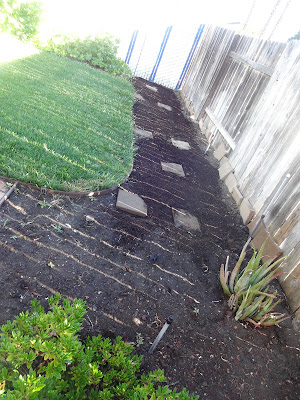When growing out the a seed packet Carosello Spuredda Leccese cucumber-melon what I expected was something that was either dark or something with stripes. What I did not expect was to grow something that was between light and dark. The Carosello Scopattizo Barese is the equivalent of a middle-of-the-road carosello – at least in color. This carosello has some light with little dark spots at every pore, making the whole fruit (or at least everywhere but the furrows) appear an emerald green color.
The flavor of this variety is much like other carosello. The water content is a little lower than some, but higher than something like a Medium Long of Polignano or Medium Long of Barese. There is definitely some sweetness to it. However, what I really like about many of the carosello is the color. I know that the color does not dramatically change what the flavor is, but to me it makes a difference.
 |
| The Scopattizo Barese |
 |
| July 26th, 2018 Scopattizo vine is near the top left. |
 |
| August 23rd |
 |
| August 30th |
The flavor of this variety is much like other carosello. The water content is a little lower than some, but higher than something like a Medium Long of Polignano or Medium Long of Barese. There is definitely some sweetness to it. However, what I really like about many of the carosello is the color. I know that the color does not dramatically change what the flavor is, but to me it makes a difference.
 |
| September 8th |
 |
| October 22nd, 2018 |
One
of the interesting things about growing carosello is to see the
difference in the mature fruit color seed color from one variety to
another. Some seeds and fruit are light inside and some, like the
Carosello Scapattizo Barese have orange color in them as well as darker
seeds. Though I previously found that many off-type carosello that I
grew in the past would produce lighter fruit, it seems that – as of late
– I have been coming across the Scopattizo Barese much more often.
Sadly, it seems that many seed retailers put whatever carosello seed
they find into seed packets without regard to what the seed will really
grow.
 |
| Carosello Scopatizzo Sementi (or seed) |





























